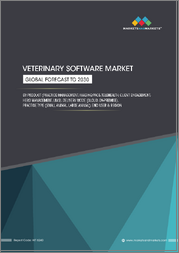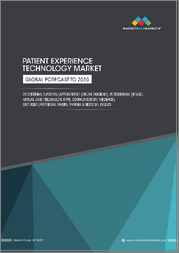
|
시장보고서
상품코드
1588525
텔레헬스 시장 규모, 점유율, 성장 분석, 제품 유형별, 질환 영역별, 전달 모드별, 최종 용도별, 지역별 - 산업 예측(2024-2031년)Telehealth Market Size, Share, Growth Analysis, By Product Type (Hardware, Software), By Disease Area (General Medicine, Psychiatry), By Delivery Mode (On-premises, Cloud-based), By End Use (Payers, Patients), By Region - Industry Forecast 2024-2031 |
||||||
세계의 텔레헬스 시장 규모는 2022년에 765억 7,000만 달러에 달하며, 2023년 1,011억 7,000만 달러에서 2031년에는 5,772억 7,000만 달러로 성장하며, 예측 기간(2024-2031년)의 CAGR은 24.32%로 성장할 전망입니다.
텔레헬스 시장은 디지털 헬스 솔루션의 도입 확대, 스마트폰의 보급, 인터넷 연결 강화로 인해 크게 성장하고 있습니다. 환자, 의사, 정부 기관이 원격의료를 채택하는 사례가 증가하고 있으며, 특히 원격지에서는 앱이나 화상 진료를 통해 의료 서비스를 쉽게 이용할 수 있으므로 의료 시설에 직접 방문해야 할 필요성이 줄어들고 있습니다. IT 인프라에 대한 투자와 스마트폰의 보급이 시장을 더욱 견인하고 있으며, 다양한 구독 옵션과 데이터 보안을 강화하여 모바일 헬스 경험을 향상시키는 데 주력하고 있습니다. 원격의료는 이제 의사들에게 필수적인 채널이 되어 편리한 진료에 대한 급증하는 수요를 충족시키며 산업 성장을 촉진하고 있습니다.
목차
서론
- 조사의 목적
- 정의
- 시장 범위
조사 방법
- 정보 조달
- 2차 데이터 소스와 1차 데이터 소스
- 시장 규모 예측
- 시장의 상정과 제한
개요
- 시장 개요 전망
- 공급 수요 동향 분석
- 부문별 기회 분석
시장 역학과 전망
- 시장 역학
- 촉진요인
- 기회
- 억제요인
- 과제
- Porter의 산업 분석
주요 시장 인사이트
- 기술 분석
- 밸류체인 분석
- 시장의 에코시스템
- 특허 분석
- 고객과 구매 기준 분석
- 규제 상황
- PESTEL 분석
- 혁신 매트릭스
- 주요 투자 분석
- 주요 성공 요인
- 경쟁의 정도
- 거시경제 요인
텔레헬스 시장 : 제품 유형별
- 시장 개요
- 하드웨어
- 모니터
- 의료 주변기기
- 혈압계
- 혈당치 측정기
- 체중계
- 펄스옥시미터
- 피크 플로우 미터
- 심전도 모니터
- 기타
- 소프트웨어
- 스탠드얼론 소프트웨어
- 통합 소프트웨어
- 서비스
- 원격 환자 모니터링
- 실시간 인터랙션
- 보존과 전송
- 기타
텔레헬스 시장 : 질환 영역별
- 시장 개요
- 일반 내과
- 정신의학
- 약물 사용
- 방사선과
- 내분비학
- 피부과
- 소화기 내과
- 신경 내과
- 이비인후과
- 심장병학
- 종양학
- 치과
- 부인과
- 기타
텔레헬스 시장 : 전달 모드별
- 시장 개요
- 온프레미스
- 클라우드 기반
텔레헬스 시장 : 용도별
- 시장 개요
- 원격 상담
- Teleicu
- 원격 정신과
- 원격 방사선 진단
- 원격 뇌졸중 진료
- 원격 피부과
- 기타 용도
텔레헬스 시장 : 최종 용도별
- 시장 개요
- 지불자
- 공적 지불자
- 민간 보험 회사
- 환자
- 기타
텔레헬스 시장 : 지역별
- 시장 개요
- 북미
- 미국
- 캐나다
- 유럽
- 독일
- 스페인
- 프랑스
- 영국
- 이탈리아
- 기타 유럽 지역
- 아시아태평양
- 중국
- 인도
- 일본
- 한국
- 기타 아시아태평양
- 라틴아메리카
- 브라질
- 기타 라틴아메리카 지역
- 중동 및 아프리카(MEA)
- GCC 국가
- 남아프리카공화국
- 기타 중동 및 아프리카 지역
경쟁 구도
- 상위 5사의 비교
- 주요 기업의 시장 포지셔닝(2023년)
- 주요 시장 기업이 채택한 전략
- 시장에서의 최근 활동
- 주요 기업의 시장 점유율(2023년)
주요 기업 개요
- Koninklijke Philips N.V.
- General Electric
- Oracle
- Siemens AG
- Medtronic
- Evernorth
- Included Health
- Global Med
- Aerotel Ltd.
- Allscripts Healthcare Solutions Inc.
- AMD Global Telemedicine Inc.
- American Well Corporation
- Cigna Corporation
- Cisco Systems Inc.
- Doxy.me Inc.
- HealthTap Inc.
- Accolade Inc.
- SHL Telemedicine
- Patient Square Capital
- Teladoc Health Inc.
- Twilio Inc
Global Telehealth Market size was valued at USD 76.57 billion in 2022 and is poised to grow from USD 101.17 billion in 2023 to USD 577.27 billion by 2031, growing at a CAGR of 24.32% during the forecast period (2024-2031).
The telehealth market has seen significant growth due to the rising adoption of digital health solutions, widespread smartphone usage, and enhanced internet connectivity. Patients, physicians, and government agencies increasingly embrace telehealth, facilitating easy access to medical care through apps and video consultations, especially in remote areas, thus reducing the need for physical visits to healthcare facilities. Major players like Apple, Google, and IBM focus on enriching mobile health experiences with various subscription options and strengthened data security. Investments in IT infrastructure and smartphone proliferation further drive the market. Telehealth is now an essential channel for doctors, meeting the surging demand for convenient consultations and propelling industry expansion.
Top-down and bottom-up approaches were used to estimate and validate the size of the Global Telehealth market and to estimate the size of various other dependent submarkets. The research methodology used to estimate the market size includes the following details: The key players in the market were identified through secondary research, and their market shares in the respective regions were determined through primary and secondary research. This entire procedure includes the study of the annual and financial reports of the top market players and extensive interviews for key insights from industry leaders such as CEOs, VPs, directors, and marketing executives. All percentage shares split, and breakdowns were determined using secondary sources and verified through Primary sources. All possible parameters that affect the markets covered in this research study have been accounted for, viewed in extensive detail, verified through primary research, and analyzed to get the final quantitative and qualitative data.
Global Telehealth Market Segmental Analysis
Global Telehealth Market is segmented by Product Type, Disease Area, Delivery Mode, End Use, and Region. Based on Product Type, the market is segmented into Hardware (Monitors, Medical Peripheral Devices (Blood Pressure Meters, Blood Glucose Meters, Weighing Scales, Pulse Oximeters, Peak Flow Meters, ECG Monitors, Others)), Software (Standalone Software, Integrated Software), Services (Remote Patient Monitoring, Real-Time Interactions, Store and Forward, Others). Based on Disease Area, the market is segmented into General Medicine, Psychiatry, Substance Use, Radiology, Endocrinology, Dermatology, Gastroenterology, Neurological Medicine, ENT, Cardiology, Oncology, Dental, Gynecology, Others. Based on Delivery Mode, the market is segmented into On-premises, and Cloud-based. Based on Application, the market is segmented into Teleconsultation, Teleicu, Telepsychiatry, Teleradiology, Telestroke, Teledermatology, and Other Application. Based on End Use, the market is segmented into Payers (Public Payers, Private Payers), Patients. Based on region, the market is segmented into North America, Europe, Asia Pacific, Latin America and Middle East & Africa.
Drivers of the Global Telehealth Market
The rising prevalence of chronic diseases, such as cardiovascular conditions, diabetes, and respiratory disorders, has driven the need for continuous management and monitoring, often requiring frequent visits to healthcare providers. Telehealth has emerged as a transformative and cost-effective solution to address this need by enabling patients to manage their conditions from the comfort of their homes. Through telehealth platforms, individuals can monitor vital signs, track symptoms, and engage with medical professionals remotely. This approach not only reduces the burden of physical visits to healthcare facilities but also enhances patient convenience and adherence to treatment plans, promoting better health outcomes.
Restraints in the Global Telehealth Market
The substantial costs associated with healthcare IT devices present a notable restraint for the telehealth market. Implementing telehealth services demands significant investment in advanced systems, software, and hardware, posing a challenge for many healthcare providers, especially smaller facilities or those with limited financial resources. The financial burden of procuring, integrating, and maintaining these technological components can be overwhelming, deterring certain medical institutions from adopting telehealth solutions. This financial strain hampers broader adoption and limits access to telehealth advancements, particularly for those unable to bear the continuous expenses associated with system upgrades and ongoing support.
Market Trends of the Global Telehealth Market
The telehealth market is witnessing significant growth driven by increasing government initiatives aimed at enhancing healthcare accessibility. Telehealth bridges the gap in medical care, particularly benefiting rural and underserved regions, which often lack quality healthcare infrastructure. Recognizing this, governments in numerous countries are prioritizing policies and funding to expand virtual care platforms. Such initiatives are crucial for reaching remote populations, especially in developing nations, where a substantial portion of residents live in rural areas. This push not only facilitates comprehensive medical services but also strengthens the overall healthcare delivery system through innovative telehealth solutions.
Table of Contents
Introduction
- Objectives of the Study
- Definitions
- Market Scope
Research Methodology
- Information Procurement
- Secondary & Primary Data Sources
- Market Size Estimation
- Market Assumptions & Limitations
Executive Summary
- Market Overview Outlook
- Supply Demand Trend Analysis
- Segmental Opportunity Analysis
Market Dynamics & Outlook
- Market Dynamics
- Drivers
- Opportunities
- Restraints
- Challenges
- Porters Analysis
- Competitive rivalry
- Threat of Substitute Products
- Bargaining Power of Buyers
- Threat of New Entrants
- Bargaining Power of Suppliers
Key Market Insights
- Technology Analysis
- Value Chain Analysis
- Ecosystem of the Market
- Patent Analysis
- Customer & Buying Criteria Analysis
- Regulatory Landscape
- PESTEL Analysis
- Innovation Matrix
- Top Investment Analysis
- Key Success Factor
- Degree of Competition
- Macro-Economic Factors
Telehealth Market by Product Type
- Market Overview
- Hardware
- Monitors
- Medical Peripheral Devices
- Blood Pressure Meters
- Blood Glucose Meters
- Weighing Scales
- Pulse Oximeters
- Peak Flow Meters
- ECG Monitors
- Others
- Software
- Standalone Software
- Integrated Software
- Services
- Remote Patient Monitoring
- Real-Time Interactions
- Store and Forward
- Others
Telehealth Market by Disease Area
- Market Overview
- General Medicine
- Psychiatry
- Substance Use
- Radiology
- Endocrinology
- Dermatology
- Gastroenterology
- Neurological Medicine
- ENT
- Cardiology
- Oncology
- Dental
- Gynecology
- Others
Telehealth Market by Delivery Mode
- Market Overview
- On-premises
- Cloud-based
Telehealth Market by Application
- Market Overview
- Teleconsultation
- Teleicu
- Telepsychiatry
- Teleradiology
- Telestroke
- Teledermatology
- Other Application
Telehealth Market by End Use
- Market Overview
- Payers
- Public Payers
- Private Payers
- Patients
- Others
Telehealth Market Size by Region
- Market Overview
- North America
- USA
- Canada
- Europe
- Germany
- Spain
- France
- UK
- Italy
- Rest of Europe
- Asia Pacific
- China
- India
- Japan
- South Korea
- Rest of Asia-Pacific
- Latin America
- Brazil
- Rest of Latin America
- Middle East & Africa (MEA)
- GCC Countries
- South Africa
- Rest of MEA
Competitive Landscape
- Top 5 Player Comparison
- Market Positioning of Key Players, 2023
- Strategies Adopted by Key Market Players
- Recent Activities in the Market
- Key Companies Market Share (%), 2023
Key Company Profiles
- Koninklijke Philips N.V.
- Company Overview
- Business Segment Overview
- Financial Updates
- Key Developments
- General Electric
- Company Overview
- Business Segment Overview
- Financial Updates
- Key Developments
- Oracle
- Company Overview
- Business Segment Overview
- Financial Updates
- Key Developments
- Siemens AG
- Company Overview
- Business Segment Overview
- Financial Updates
- Key Developments
- Medtronic
- Company Overview
- Business Segment Overview
- Financial Updates
- Key Developments
- Evernorth
- Company Overview
- Business Segment Overview
- Financial Updates
- Key Developments
- Included Health
- Company Overview
- Business Segment Overview
- Financial Updates
- Key Developments
- Global Med
- Company Overview
- Business Segment Overview
- Financial Updates
- Key Developments
- Aerotel Ltd.
- Company Overview
- Business Segment Overview
- Financial Updates
- Key Developments
- Allscripts Healthcare Solutions Inc.
- Company Overview
- Business Segment Overview
- Financial Updates
- Key Developments
- AMD Global Telemedicine Inc.
- Company Overview
- Business Segment Overview
- Financial Updates
- Key Developments
- American Well Corporation
- Company Overview
- Business Segment Overview
- Financial Updates
- Key Developments
- Cigna Corporation
- Company Overview
- Business Segment Overview
- Financial Updates
- Key Developments
- Cisco Systems Inc.
- Company Overview
- Business Segment Overview
- Financial Updates
- Key Developments
- Doxy.me Inc.
- Company Overview
- Business Segment Overview
- Financial Updates
- Key Developments
- HealthTap Inc.
- Company Overview
- Business Segment Overview
- Financial Updates
- Key Developments
- Accolade Inc.
- Company Overview
- Business Segment Overview
- Financial Updates
- Key Developments
- SHL Telemedicine
- Company Overview
- Business Segment Overview
- Financial Updates
- Key Developments
- Patient Square Capital
- Company Overview
- Business Segment Overview
- Financial Updates
- Key Developments
- Teladoc Health Inc.
- Company Overview
- Business Segment Overview
- Financial Updates
- Key Developments
- Twilio Inc
- Company Overview
- Business Segment Overview
- Financial Updates
- Key Developments



















